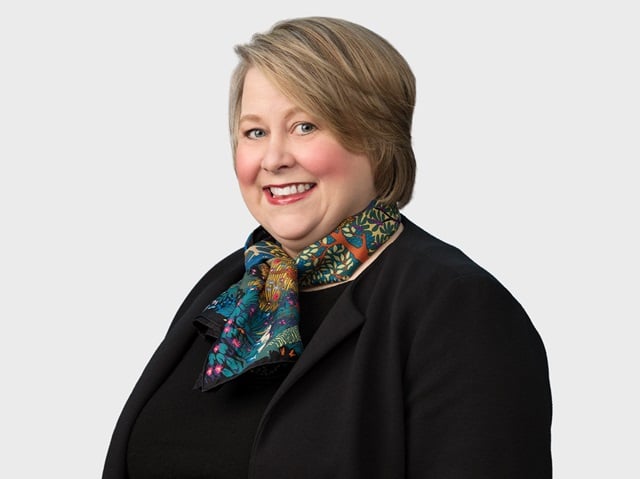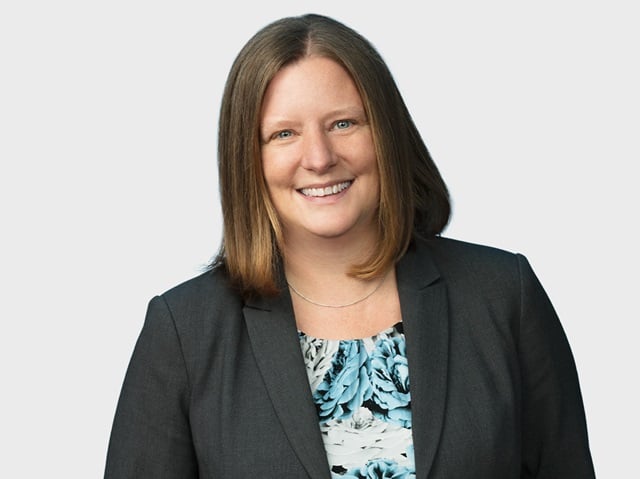April 1, 2017 is the first day U.S. Citizenship and Immigration Services (USCIS) will accept H-1B cap-subject petitions for the FY 2018 allotment of visas for foreign national professionals in specialty occupations. Cap-subject H-1B visas become available each year on October 1 — and filings with USCIS can be made no sooner than six months in advance.
With the H-1B cap reached within the first five days of filing in the last four years (2016, 2015, 2014 and 2013), there continues to be pent up demand for H-1B visas. It is anticipated that even more H-1B visas will be filed this year due to this continued demand. In addition to the number of filings made in the last few years, the H-1B category and lottery system are likely to see changes by next year’s filing season. Currently, several bills about the H-1B work visa and other employment-based immigration issues are pending in Congress. Additionally, there are rumors that the Trump administration wants to see changes with the H-1B and other work visa categories. Those employers/employees needing H-1B visas should work to ensure that these cases are filed under this year’s H-1B cap and lottery system to ensure that any H-1B visas that are needed for October 1, 2017, are filed on April 1. Such employees can include those in F-1 status, as well as TN, L-1 or H-4 EAD workers. If there are additional restrictions with F-1 OPT STEM workers, H-4 EAD spouses, TN and L-1 workers, now is the time for these categories of workers to change to H-1B status.
Outlined below is more information about the April 1 H-1B filing deadline.
Background on H-1B Cap
Per immigration rules, a limited number of H-1B work visas are available each year. Under the regular H-1B cap, 65,000 H-1B visas are available. An additional 20,000 are available under an exemption for foreign nationals (usually F-1 students) who have graduated from a U.S. college or university with a master's degree or higher. Cap-subject H-1B visas become available each year on October 1 — and filings with USCIS can be made no sooner than six months in advance.
The H-1B visa is the most popular visa category for employers to obtain work authorization for key foreign national employees and is available for a wide variety of professional positions, including engineering, biology, computer science, accounting, teaching, sales/marketing and many other professional occupations. Foreign nationals who will fill a professional "specialty occupation" position can qualify for H-1B status. A "specialty occupation" is an occupation that requires at least a bachelor's degree (or the equivalent) as a minimum requirement. The foreign national must have a bachelor's degree (or the equivalent) in the field of specialty in order to qualify for H-1B status.
It is important to note that not all H-1B cases are subject to the cap. People, not petitions, are to be counted under the H-1B cap. Under this rule, if the foreign national listed on the petition does not already have H-1B status, the H-1B visa petition counts against the cap. Petitions not subject to the cap include H-1B extensions, petitions to change H-1B employers and petitions filed by institutions of higher education.
H-1B Cap Allotment Reached Immediately in 2016
USCIS will accept H-1B cases for each fiscal year (FY) until the entire allotment of 65,000 and 20,000 has been exhausted. In the last three H-1B filing seasons, the allotment of H-1B visas was reached at the time of filing in April. During last year's process, USCIS announced on April 12, 2016, that 236,000 cap subject H-1B petitions were received between April 1 and April 7. During last year's H-1B cap season, because there were sufficient cases to meet the annual cap of 65,000 for regular cases and 20,000 U.S. advanced degree exemption cases, USCIS conducted a computer-generated random selection process. The "lottery" was conducted on April 9, 2016. USCIS first conducted the random lottery of the 20,000 H-1B cases eligible under the master's cap exemption. Those cases not selected as one of the 20,000 under the master's cap exemption were then included in the random lottery for the 65,000 allotment. Those cap-subject petitions not selected during the random lottery were then sent back, with filing fees.
Although USCIS announced prior to April 1, 2016, that it would start processing premium processing cases on May 16, 2016, USCIS actually started receipting, processing and approving H-1B cases before that date. With premium processing cases, USCIS will send out email receipt notices stating that USCIS has started processing the case under its premium processing service. Receiving such an email notification indicates that a case was selected under the random lottery. Additionally, for cases filed without premium processing that were selected in the lottery, USCIS sends a hard copy receipt notice by mail. Such receipt notices were issued up to several weeks after the April 9 lottery.
U.S. Employers Must Prepare Now for April 1 Filings
With the H-1B cap reached immediately upon filing last year, this means that even more filings will be made on April 1 this year (for FY2018 H-1B filings). Therefore, companies looking to hire H-1B workers must start working on H-1B petitions now to be ready for an April 1 filing with USCIS. Like last year, it is anticipated that the allotment of regular and master's cap cases will be exhausted within the first five business days of April 1, and that USCIS will again conduct a random lottery.
Under current rules, USCIS will accept all H-1B petitions properly filed during the first five business days before conducting a random selection process, so that petitioners need not file H-1B petitions exactly on April 1. USCIS will also implement premium processing after the random lottery is conducted. As in the past, if a case is not chosen, USCIS will return the petition along with all applicable filing fees, including the $1,225 premium processing filing fee.
U.S. employers are strongly urged to start preparing for H-1B cap season and the filing of April 1 H-1B petitions. Although the H-1B petitions cannot be filed to arrive at USCIS until April 1 (or within the first five business days of April), U.S. employers can start to gather information and prepare the necessary paperwork now for filing with USCIS in April.
A key piece of paperwork needed for the filing of the H-1B petition is the approval and certification of the labor condition application (LCA) with the Department of Labor. DOL is currently processing LCAs within a seven-business-day time frame. Therefore, employers should anticipate this wait time (at least) in receiving an approved labor condition application. Employers should start working on LCAs — and the other necessary paperwork — now to avoid crunch time issues immediately before the April 1 filing date.
A recommended timeline is:
- February/early March: Prepare, post and submit any Labor Condition Applications (LCAs) to the Department of Labor.
- March: Prepare and finalize H-1B forms and supporting documents.
- March 31: File your H-1B petition to be received at USCIS by Monday, April 3 (April 1 is a Saturday this year)
- April 7: Last day that USCIS will accept cases under the five business day rule.
Prepare Strong Cases to Avoid Requests for Evidence
Due to the significant increase in filings, USCIS has continued to issue more Requests for Evidence (RFE) than in past years in part to ensure that only clearly approvable H-1B cap cases were approved. It is important to start preparing cases early to identify and resolve any potential issues before filing to avoid these RFEs. When RFEs are issued, approval of the H-1B petition is delayed — sometimes significantly — and can even be months beyond the initial October 1 start date listed in the H-1B petition.
In some of these RFEs, USCIS has asked for additional information about the position and the qualifications of the H-1B worker, including additional evidence that:
- The position required a bachelor's degree or equivalent in a related field and was a specialty occupation under H-1B rules
- The degree held by the candidate was in a field related to the occupation
- The candidate's education and/or experience was equivalent to a U.S. bachelor's degree
- The petitioning employer would supervise and control the work of the H-1B employee
Again, these are just a few examples of the additional evidence USCIS has been requesting on H-1B cap cases. With such scrutiny, employers should start to prepare now for H-1B cap season.
Potential Changes Under President Trump
While we don’t know exactly what will happen with the Trump administration, immigration was a big topic during the election and President Trump has already issued several immigration-related Executive Orders since taking office. Again, with the limited time between now and April 1, we don’t expect anything will happen in time for this H-1B cap season — but could be in place by 2018/2019. Because of this uncertainty, companies may want to evaluate their H-1B needs for the next few years and file petitions this cap season.
Some of the changes that have been discussed:
• Requiring employers to pay the highest-level prevailing wage • Prioritizing allocation of H-1B visas bases on wages • Requiring employers to “test the labor market” to show there are no available U.S. employees before filing an H-1B petition • Setting aside 20 percent of new H-1B visas for employers with fewer than 50 employees • Eliminating or changing the master’s degree cap exemption • Revising the H-1B lottery system
These changes would require congressional action and so would take some time to enact. If Congress does act, they could also make other changes to the H-1B process (such as increasing filing fees, decreasing the number available each year, making changes to the H-1B lottery, etc.)
Conclusion
With an increase in demand for H-1B visas, an anticipated random lottery to be conducted and uncertainty with the Trump administration, employers need to prepare and file any needed H-1B petitions to be received by April 1, 2017. Faegre Baker Daniels professionals will provide further updates on H-1B cap information that you might need to consider if an H-1B petition is filed on April 1 and is unfortunately not selected by USCIS in the random lottery.
.svg?rev=a492cc1069df46bdab38f8cb66573f1c&hash=2617C9FE8A7B0BD1C43269B5D5ED9AE2)


